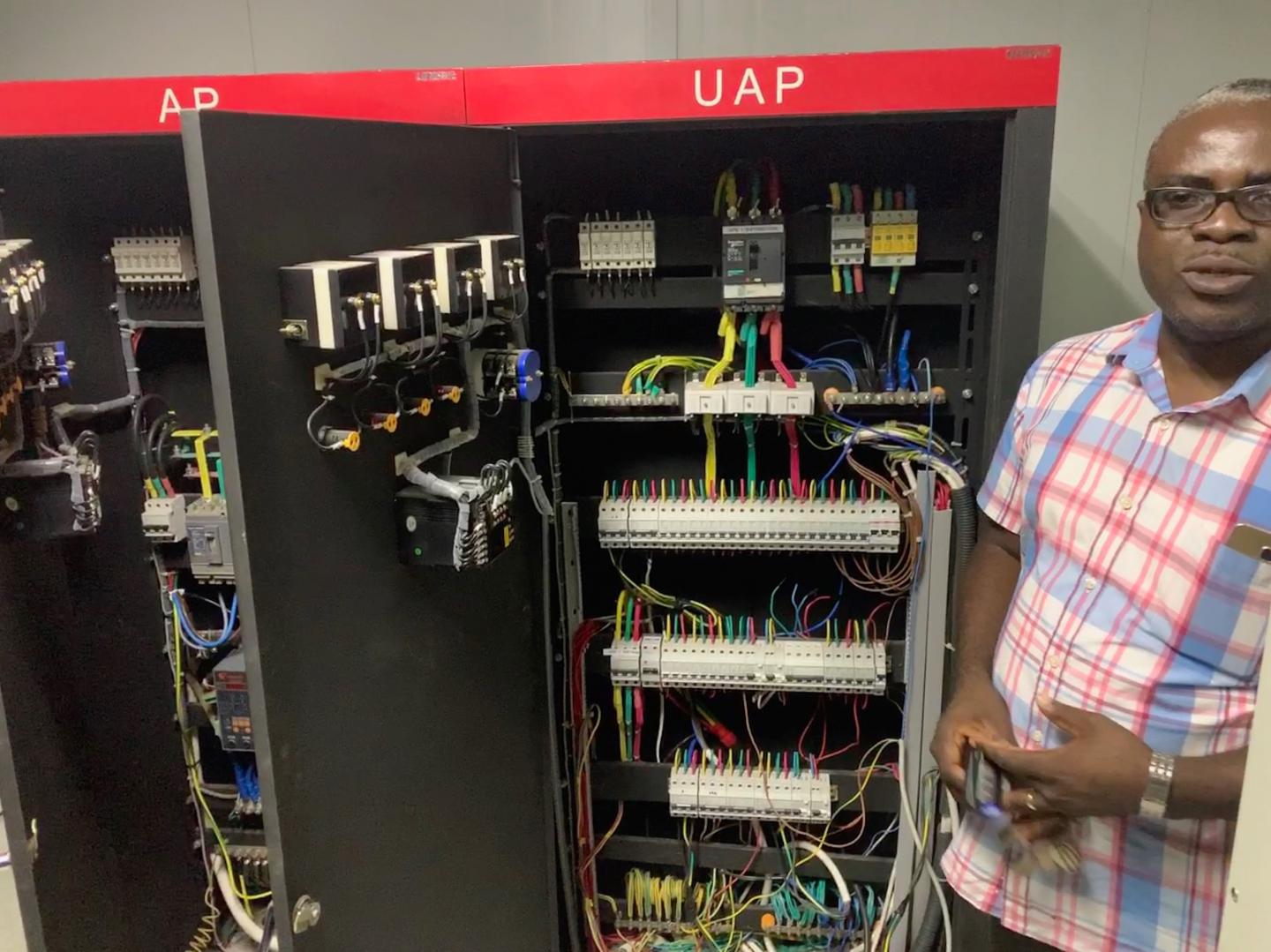
Credit: College of ACES, University of Illinois.
URBANA, Ill. – Fast and reliable internet access is fundamental for research and development activity around the world. Seamless connectivity is a privilege we often take for granted. But in developing nations, technological limitations can become stumbling blocks to efficient communication and cause significant disadvantages.
Pete Goldsmith, director of the Soybean Innovation Lab at University of Illinois, works closely with partner organizations in several African countries. He noticed that his African colleagues were often dealing with technological problems that made communication very challenging. For example, sometimes they had to rely on their cell phones because their institution’s internet access was unreliable.
Goldsmith teamed up with two IT experts at U of I, former Chief Information Officer Paul Hixson and Director of Research IT and Innovation Tracy Smith, to investigate technological challenges facing institutions in developing countries.
“Connectivity is the oxygen organizations run on,” Hixson says. “It’s such a basic requirement that it’s often not even recognized as an issue. But lack of connectivity severely hinders an organization’s ability to perform simple functions, conduct research, and compete for grants.”
Goldsmith, Hixson, and Smith conducted an in-depth case study of information communication technology (ICT) infrastructure at the Savannah Agricultural Research Institute (SARI), a leading research station in Ghana and a close collaborator of SIL.
The case study included focus groups, interviews, and a technological analysis of SARI’s equipment and connectivity. Based on this study, the research team developed the ICT Health Checkup, an assessment procedure for IT administrators to methodically assess the current state of their system, identify gaps affecting performance, and document steps for remediation.
The ICT Health Checkup tool systematically evaluates four key elements of ICT infrastructure. The first step focuses on connectivity and bandwidth, identifying the required bandwidth to accommodate the institution’s needs and whether the institution has an uninterrupted fiber-based connection to the global internet. The second step analyzes core physical infrastructure, including dependable electricity, local network design, and both wired and wireless connectivity capabilities.
The third step looks at available intranet service offerings for researchers such as local storage, data backup procedures, access control, security procedures, email service, and cloud access. Finally, the fourth step deals with the human resources and technical support requirements for planning and managing the institution’s IT infrastructure.
“With this tool, institutions can go through a checklist, and at each point there is a ‘stoplight’. If it’s red, you know there is something that needs to be fixed, because there are conditions that will act as a block and you can’t go on until they are fixed – until there’s a green light. So turning things from red to green at each step is crucial; methodically going through each step at a time and making sure it’s fixed before moving on to the next one,” Hixson explains.
The researchers compare the ICT Health Checkup to a medical health exam; it measures the current conditions and can be used as a benchmarking tool to measure improvements.
Goldsmith says the tool can be used to empower organizations so they can be self-sufficient. “With proper connectivity you can manage and store research data, compete for grants, and manage awards,” he notes. “It’s the foundation that allows institutions to participate fully in a global context.”
The research team is currently expanding the study, collecting data from nine institutions and five networking organizations operating in three countries, in order to create a more robust picture of internet connectivity challenges and potential solutions across Africa.
They are also collaborating with the National Research and Education Networks (NRENs) in each of the sub-Saharan African countries that SIL operates in. These African NRENs are comparable to Internet2, which has been an instrumental partner in the expansion and adoption of advanced computing technologies at U of I and is one of the leading NRENs in the U.S., serving the country’s research and higher-education communities.
“With the ICT health checkup, our partner African NRENs now have an actual assessment tool they can use with their member institutions. It’s becoming a continent-wide approach as they are starting to adopt this new instrument created at the U of I to be their benchmark and measurement tool,” Goldsmith says.
“The U of I is ideally positioned to provide this knowledge, because of the university’s continued leadership in the computational and network administration space,” he adds. “Now we are extending that to have real impact overseas.”
###
The article, “The ICT Health Checkup Tool: Assessing Connectivity of the National Agriculture Research System (NARS),” is published in African Journal of Food, Agriculture, Nutrition and Development.
Funding was provided by the Feed the Future Innovation Lab for Soybean Value Chain Research (Soybean Innovation Lab (SIL)) under the U.S. Government’s global hunger and food security initiative, Feed the Future.
The Soybean Innovation Lab is in the Department of Agricultural and Consumer Economics, College of Agricultural, Consumer and Environmental Sciences, University of Illinois.
Media Contact
Marianne Stein
[email protected]
Original Source
https:/
Related Journal Article
http://dx.





